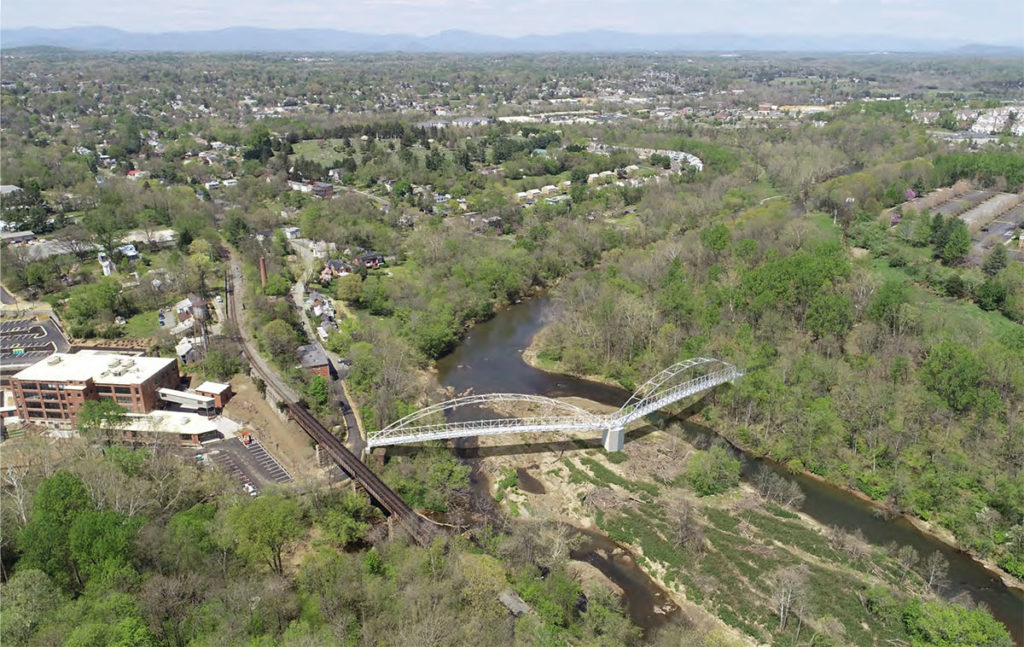
Update (August 1): The MPO submitted the Bridge proposal (with the Wool Factory terminus) to VDOT this afternoon for SMARTSCALE funding. We will find out if the project is approved in January of 2023.
Read the full project background here.
As you may know, the Metropolitan Planning Organization’s Policy Board voted last week to pursue VDOT SMARTSCALE funding for a pedestrian bridge connecting Pantops and Woolen Mills at the end of Market Street (the Wool Factory). Allison Wrabel wrote a good story about the vote.
Getting a pedestrian connection over the Rivanna in this area is a big win for the community, and I’m excited for the next step. Although the public survey and MPO Technical Committee both preferred the Chesapeake Street location, Market Street has powerful logic of its own and some late-breaking and not-obvious factors were decisive in the vote.
For one thing, much of the support for Chesapeake Street was contingent on the bridge being an elegant suspension bridge, which came into doubt late in the process. Many people might well have voted differently if they had known the bridge style would likely be more industrial in nature. Of course, it would have been better to know this from the beginning, but the process did work in that it brought the issue to light before the final location was selected.
What’s more, the Albemarle Board of Supervisors has a strong preference for the Market Street alignment adjacent to the Wool Factory site, which locates the bridge entirely in the County. Albemarle is stringing together a series of projects that merge economic development and community wellness in Pantops, the Old Mills Trail, the Wool Factory and Broadway. The bridge at Market Street ties them all together.
Not only is Albemarle putting forth plans, it is putting money behind them. The existing improvements at the Wool Factory are one example. Also quite interesting is the fact that the county has recently juiced several transportation projects with millions from its Transportation Leveraging Program.
That kind of local support (or Economic Development funds) could help mitigate the cost difference between the two bridge location options and be of critical importance if unforeseen contingencies arise. Although both options had strong appeal, the Policy Board (with representatives from Albemarle, Charlottesville, and VDOT) selected the one that it would best be most able to get behind and push to completion.
For all those reasons, this is a very positive outcome.
